As summer is right around the bend, you’ll want to make sure that your ice maker is in prime condition – for drinks, for cooling off, or for keeping food cold. That’s why we put together this blog to address some common problems with ice makers and help you prevent them with some quick maintenance tips!
What causes an ice maker to freeze up?
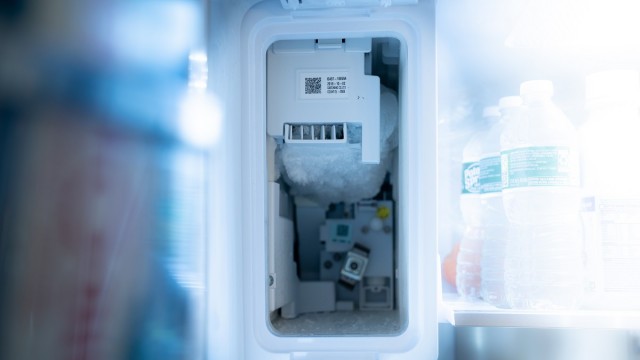
Most likely, you’ve got a frozen inlet tube. This tube supplies water to your ice maker. If you suspect this is the case, you’ll have to thaw out the tube. You’ll need to:
- Unplug your refrigerator.
- Remove your ice maker and inspect the tube.
- Use a small funnel and warm water to thaw the tube or disconnect the tube and thaw in the sink.
Check with the manufacturer’s instructions for the safest way to thaw out your unit’s tube.
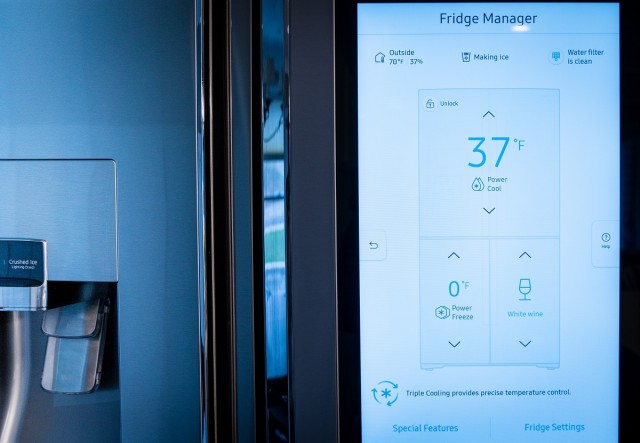
If the inlet tube isn’t frozen, then the next step is to check the water filter or freezer temperature. You may need to replace the water filter, and if your freezer is actually too cold, try raising the temperature. (The freezer needs to be between zero and eight degrees to make ice.) Don’t raise the dial too high! While that might thaw out a frozen inlet tube, it can also cause your food to thaw.
If you have hard water in your home, a clogged water inlet valve could also lead to a flood and subsequent freeze up of your ice maker. You’ll need to clean out the sediment and minerals by removing the valve in the back of your refrigerator (you’ll need a screwdriver and a wrench), and then washing the screen inside the valve with warm, soapy water.
Just remember to always check the manufacturer’s instructions and unplug the refrigerator before performing any maintenance or repairs. If need be, you might need to disconnect the water supply line to your refrigerator, so have a towel ready!
Why isn’t my ice maker producing ice?
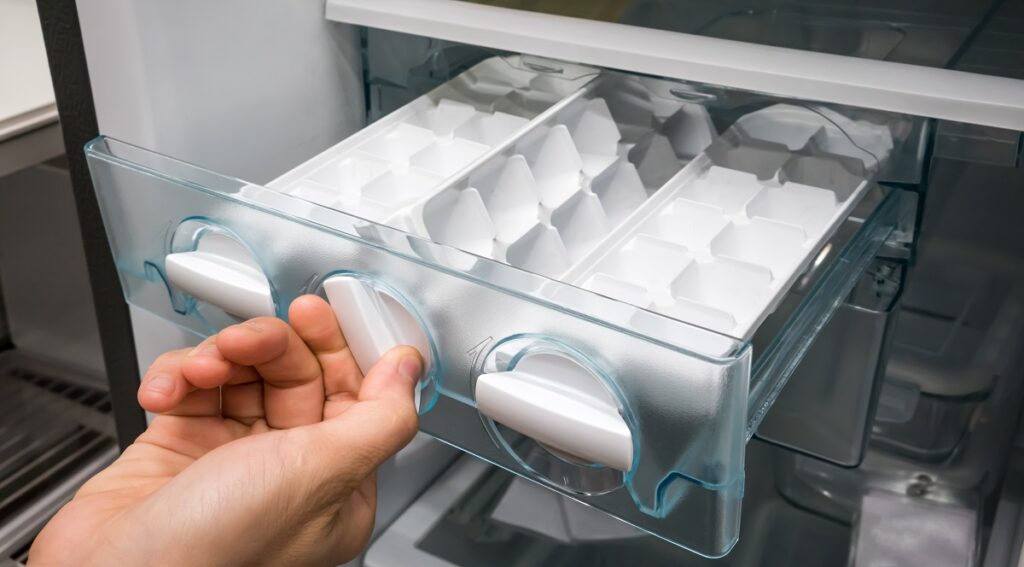
Check the mechanical parts first. Is the feeder arm working properly? Does your maker have an on-off switch that’s flipped to off? Are there any crimps in the water line that may have stopped the water flowing? Make sure everything is working as it should be.
Then check that the temperature is low enough to make ice. Fill an ice cube tray with water and place it in the freezer. Check back in a few hours. If you have ice, then check that water is making it to the ice machine.
The water filter may be clogged with sediment, especially if your home has hard water. Depending upon your refrigerator make and model, this can be super easy DIY project! Just make sure to order the correct part by checking the serial number and model number inside the unit.
If you haven’t found the problem yet, touch the bottom of your ice maker. If it feels warm, then your freezer’s heater – that’s a real thing! – may be malfunctioning. Call an appliance technician to fix the heater, though you may need to replace the ice maker.
Why does my ice smell or taste funky?
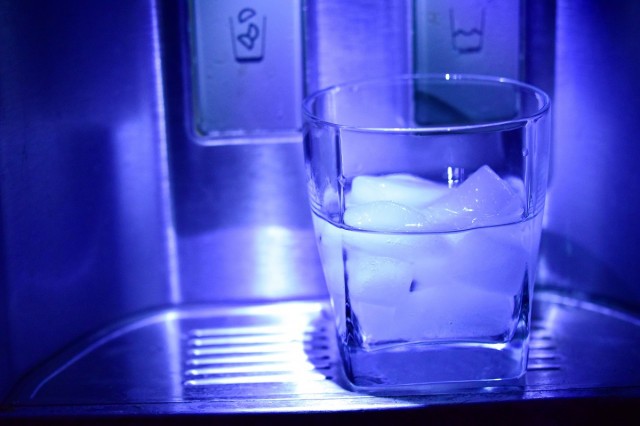
This probably means you haven’t cleaned out your refrigerator in a while, and there’s spoiled or foul-smelling food that is influencing your ice. Make sure to clean your refrigerator periodically to prevent this issue.
Every few months, throw away any ice, then wash and dry the bin. (Make sure to unplug the refrigerator whenever you are cleaning it.) At least every six months, give your ice maker a thorough cleaning. (You might have to do this more than twice a year if you have hard water.)
What does cleaning and sanitizing my ice machine entail?
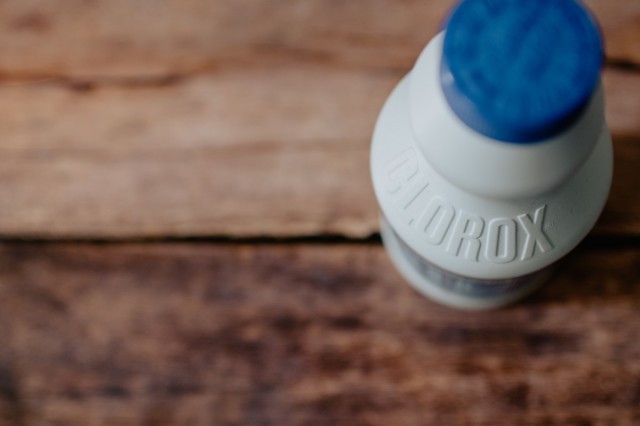
Every ice maker has a different set of instructions and warnings, so before you do start the cleaning process, read the manual online. (Most manuals are on the manufacturer’s website.)
Here are the general steps to cleaning your refrigerator ice maker:
- Turn off your ice maker and unplug your refrigerator.
- Take out the bin and dump the contains into the sink.
- Wash the bin with soap and warm water, removing any ice stuck to it.
- Sanitize the bin with either vinegar and water solution or a bleach and water formula. (You can also use a cleaning solution.) Dry completely before reinstalling.
- Examine the ice maker to make sure there’s no ice particles stuck inside. With the bin removed, clean the hardware you can reach with a clean cloth and a sanitizing liquid. Dry completely.
- Check your water filter. Replace if necessary.
- Once everything is dry, place the removed parts back into the unit. Replug the refrigerator and restart the ice maker. Dispose of the first few servings as they may have some remnants of a soap or vinegar taste.
Perform this much needed ice maker maintenance at least twice a year, more often if you start getting discolored or foul-tasting ice.
If you’re unsure how to fix an ice maker in your freezer, always call a professional.
Stay on top of home maintenance
Homeownership can be hard, but it doesn’t have to be. vipHome.app can help. In less than four minutes, you can be introduced to a new way to home. Simply download the app, register your home, and enjoy a simplified homeownership experience.
Get it today!







